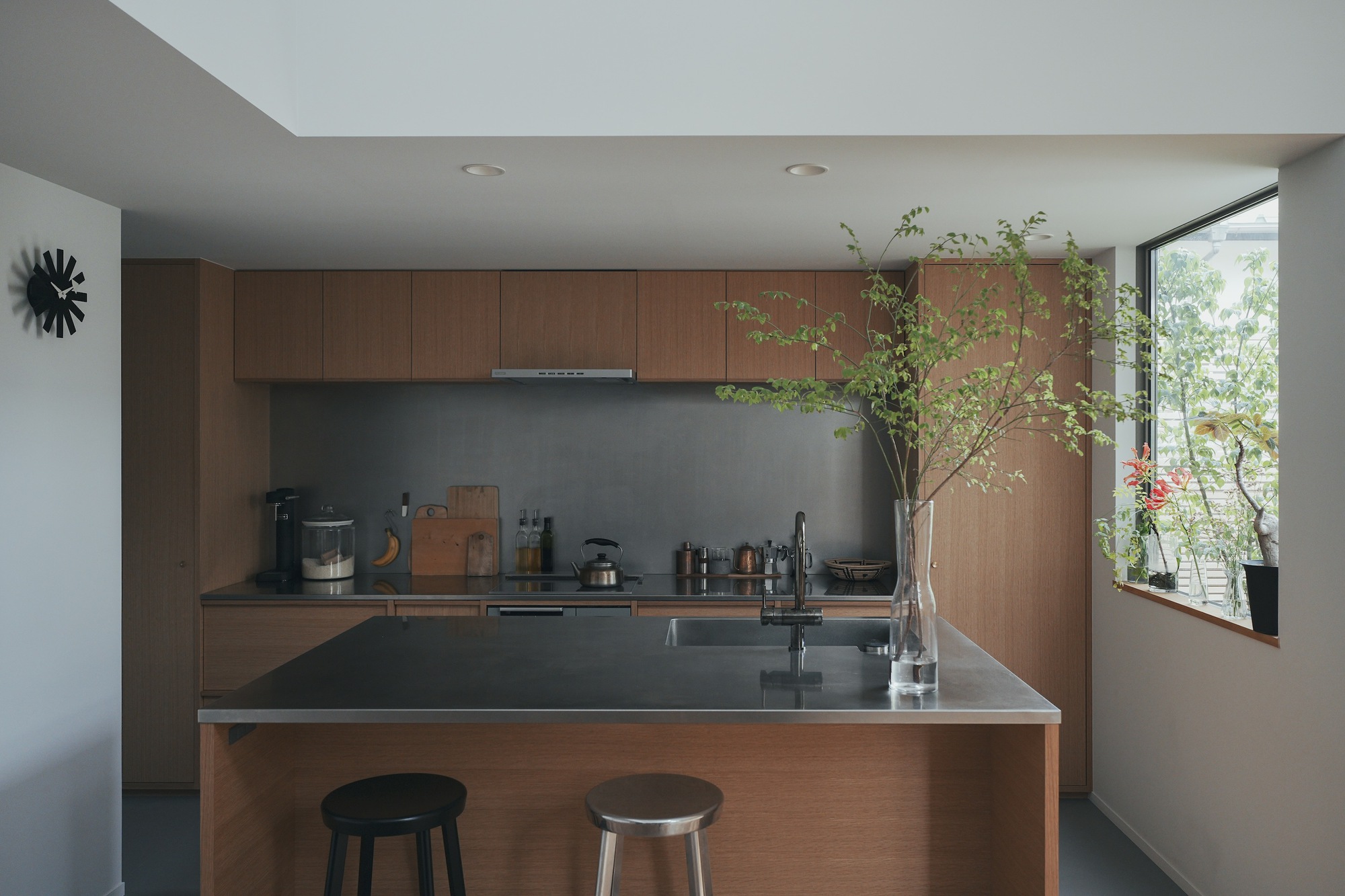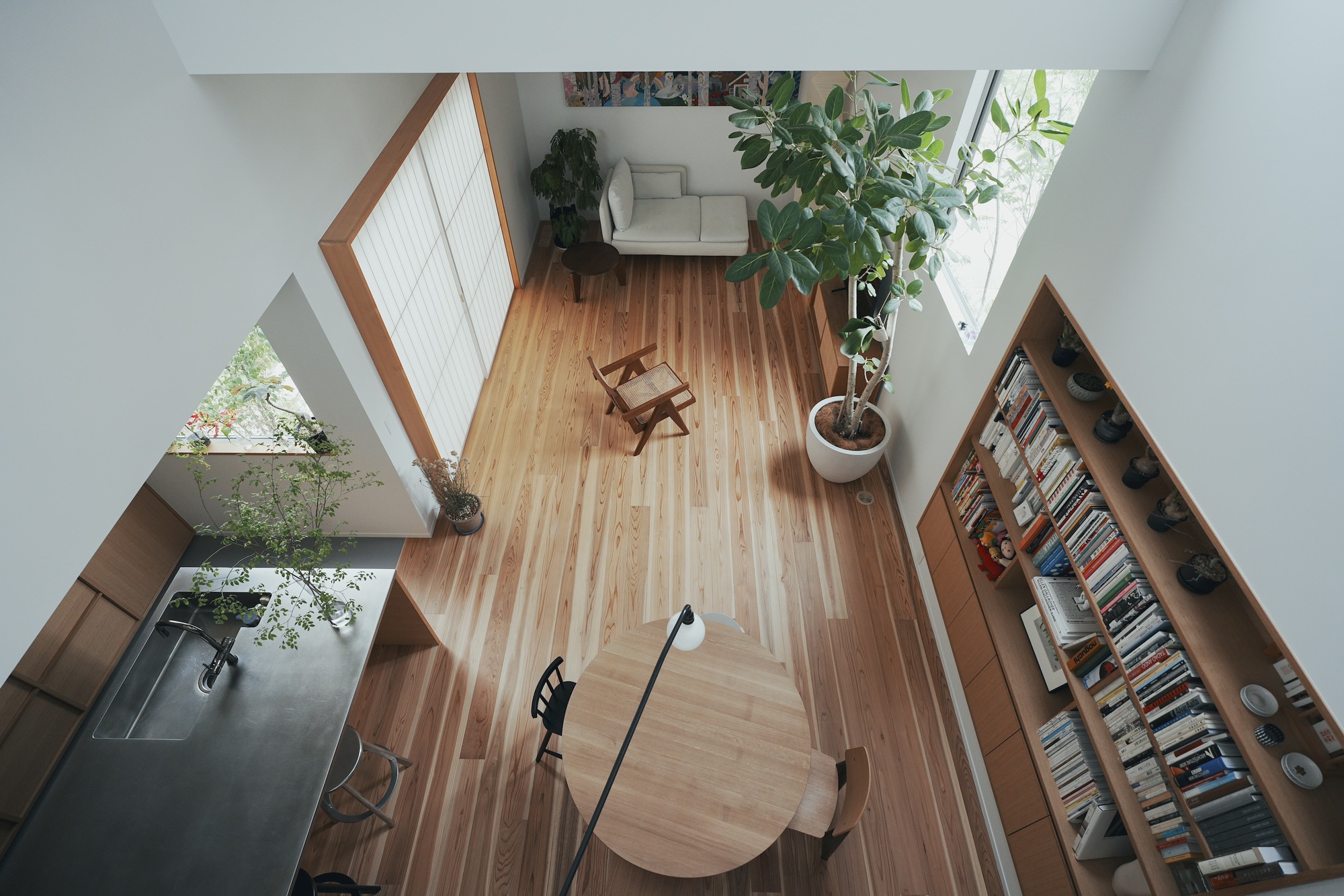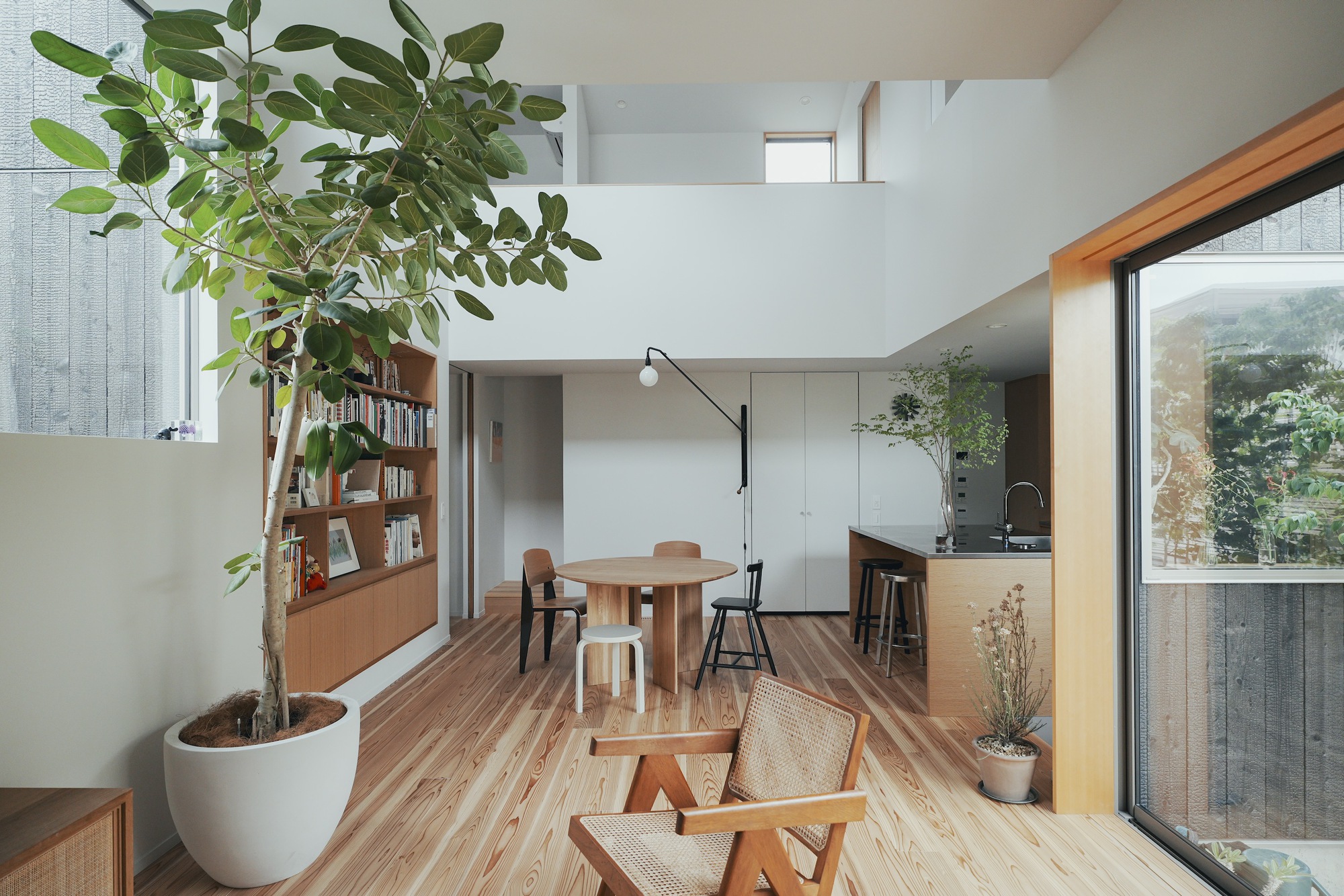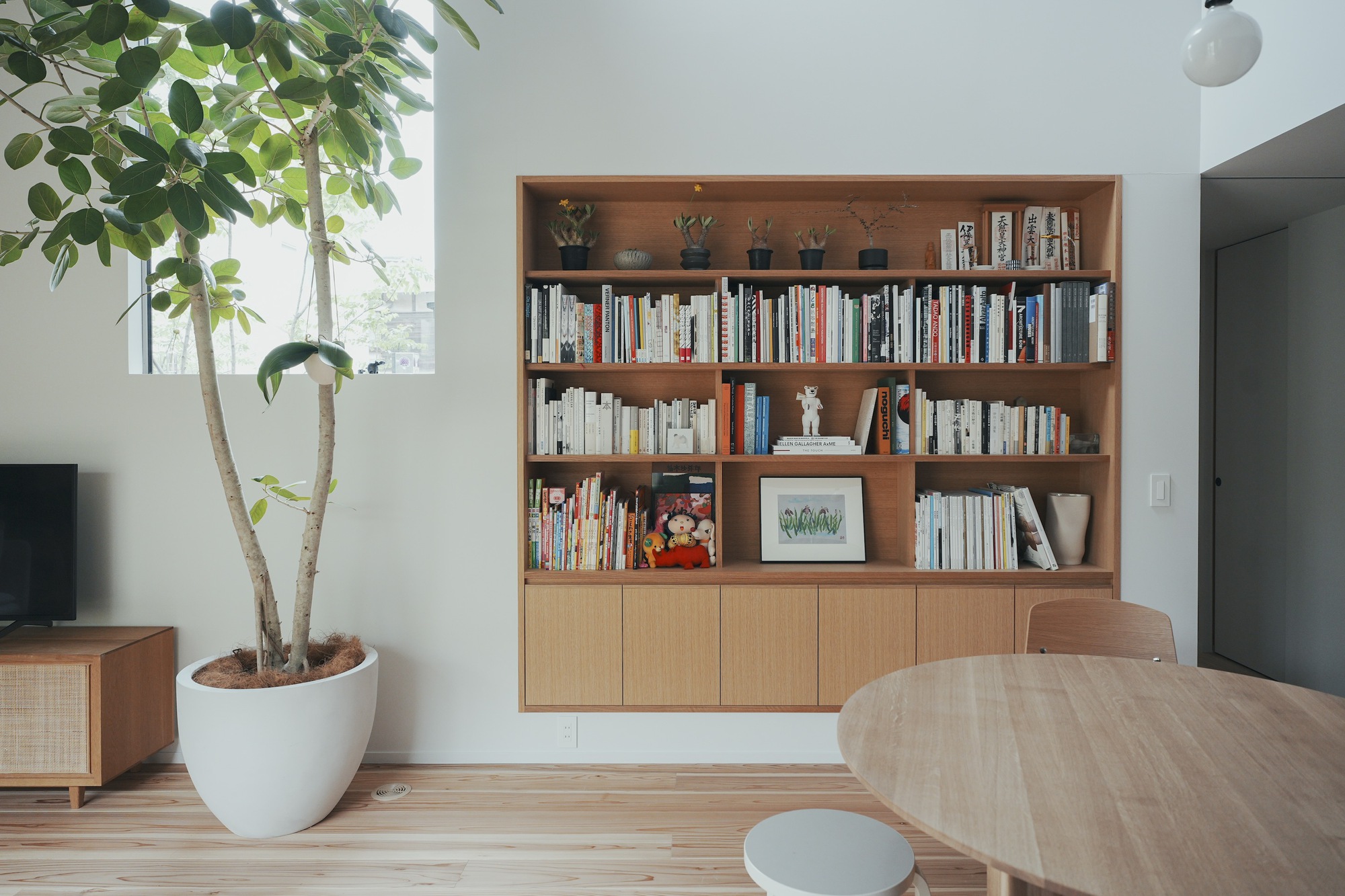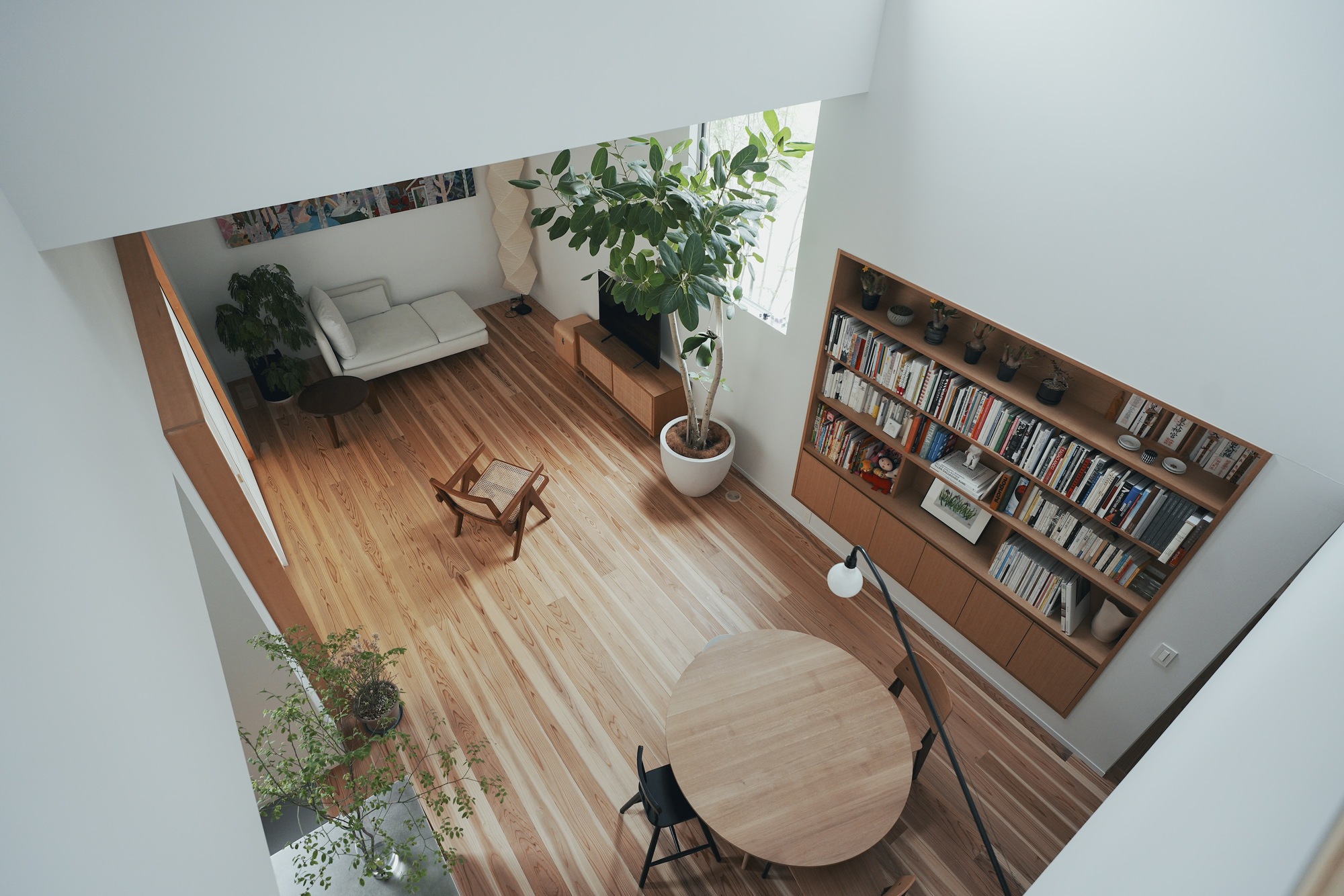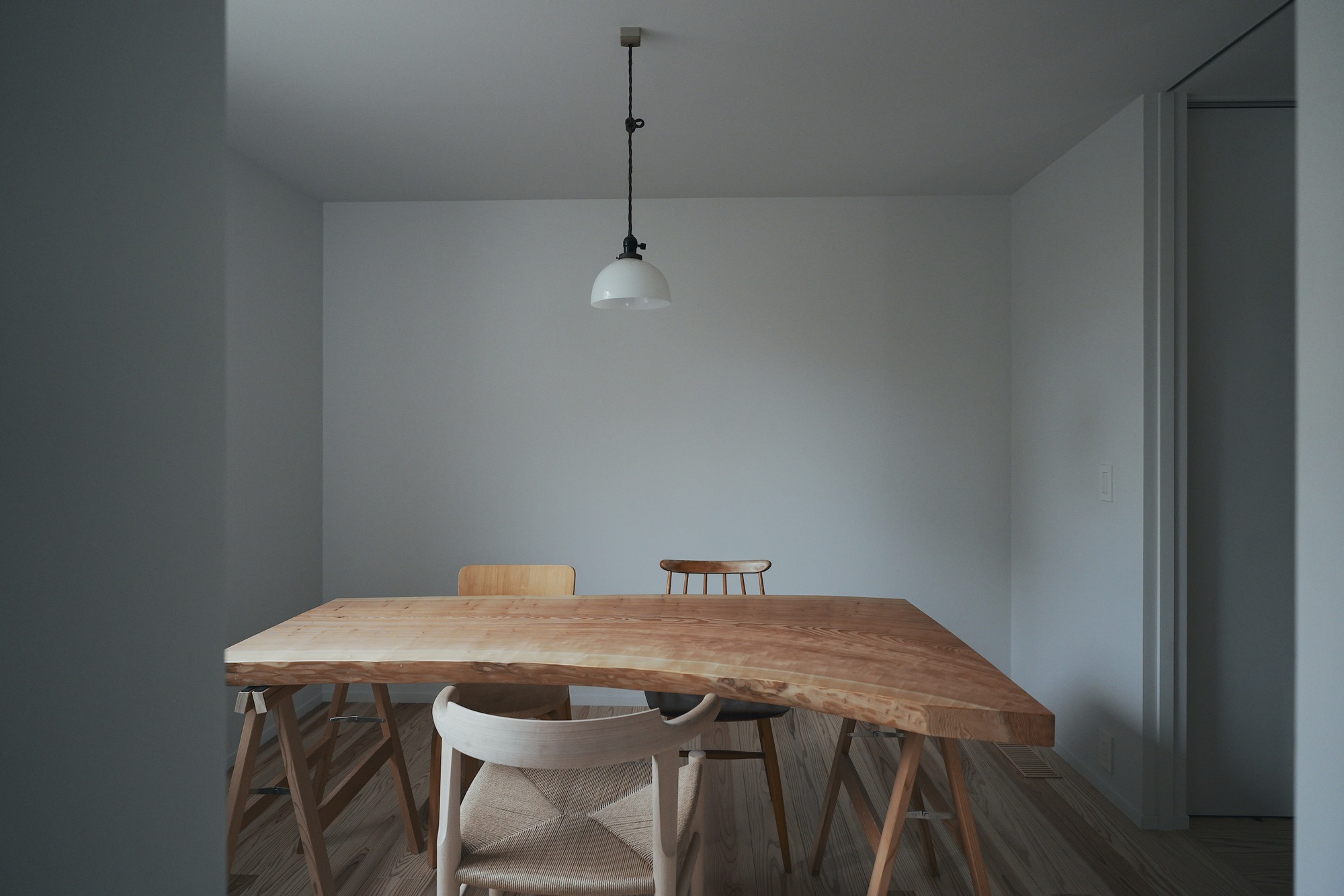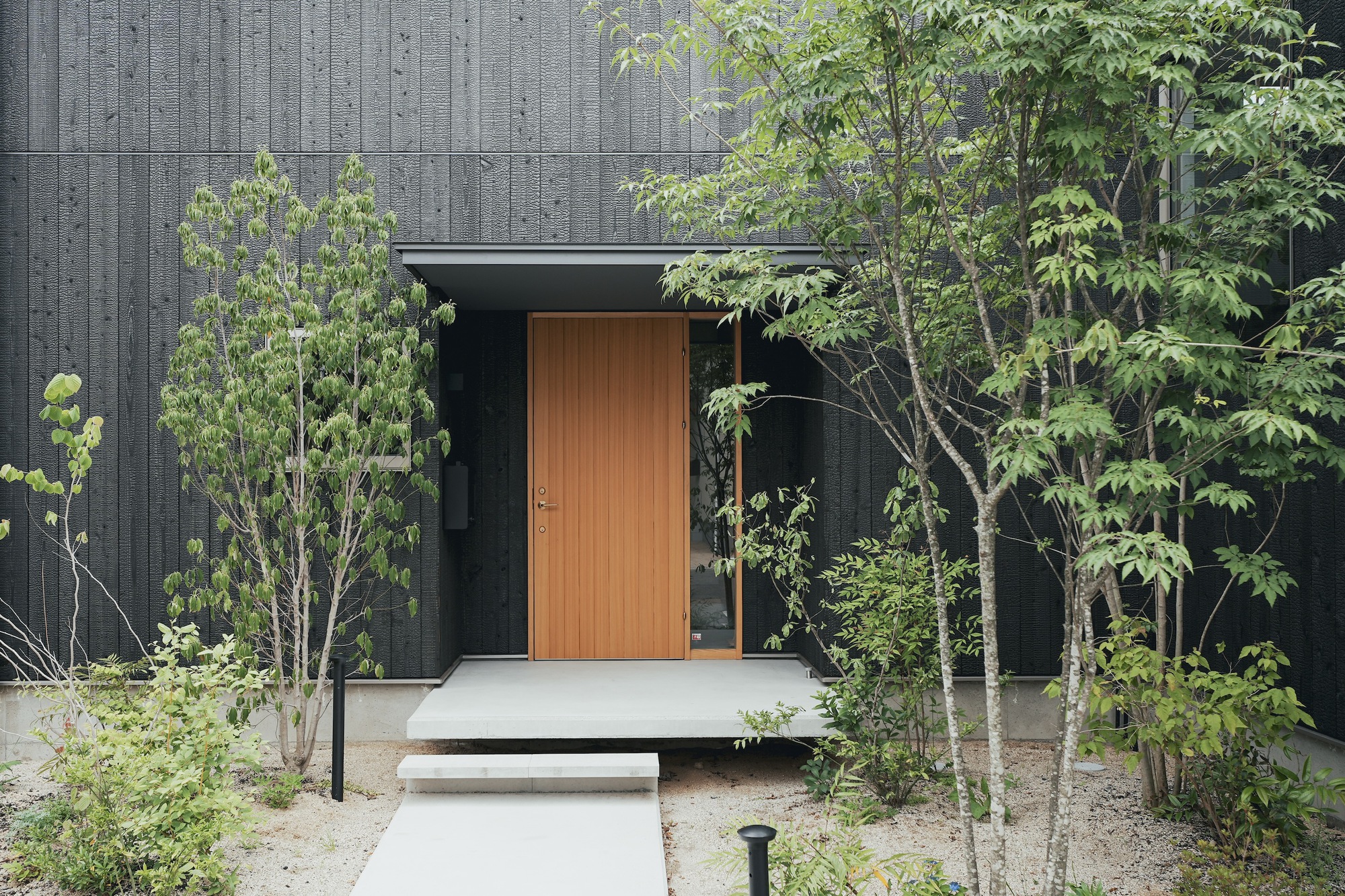House in Minami-machi is a minimal home located in Matsuyama, Japan, designed by Jun Yamaguchi Architects. This abode, an exemplar of thoughtful spatial planning, features well-defined areas that gradually transition from public to private as one ventures deeper into its confines. Yet, in spite of these clear delineations, a sense of familial presence permeates the space, fostered by subtle architectural elements such as a glass door that demarcates the dining kitchen and the office, and a void that links the ground and first floor, fostering a subtle connection between disparate areas. A tribute to local craftsmanship and materials, the house stands as a beacon of tradition amidst contemporary tastes.
The exterior bears the signature of Ehime’s longstanding building practices with its Yaki-Sugi cladded walls—a technique that involves the charring of Japanese cedar boards to create a naturally resilient and aesthetically pleasing surface. This somewhat antiquated yet enduring method not only resonates with the history of the locale but also embodies a tactile testament to the skills of the Daiku, or Japanese carpenter, bringing a touch of rustic allure to modern design.
To further embed the home within its natural surroundings, the approach to the house is flanked by lush greenery—a deliberate choice that allows both inhabitants and visitors to commune with nature as they traverse the small concrete pathway leading to the home’s floating concrete entrance. This green embrace extends beyond the boundaries of the property, fostering a shared appreciation for the verdant beauty with neighbors and the broader city. Through a careful amalgamation of tradition and modernity, this house stands as a celebration of both heritage and innovation, offering a subtle yet tangible connection to community and nature amidst the backdrop of urban living.
